Quiet: We Live In Public
Home in the Age of Spatial Computing and Social Networks
Bachleor Thesis / Design Studio @./studio3, 2024/2025
#Home as Infinite Screen #Exploratory Objects #1:1 #XR #Multipurpose Domesticity #Expanded Materiality #Spatial Computing as Spatial Practice #PublicVSPrivate #Architecture as Inhabitable Media Hybrid #Here&There #Crossprogramming #SocialVR #SocialMR #Unity3D #Superimposition #Spatial Internet
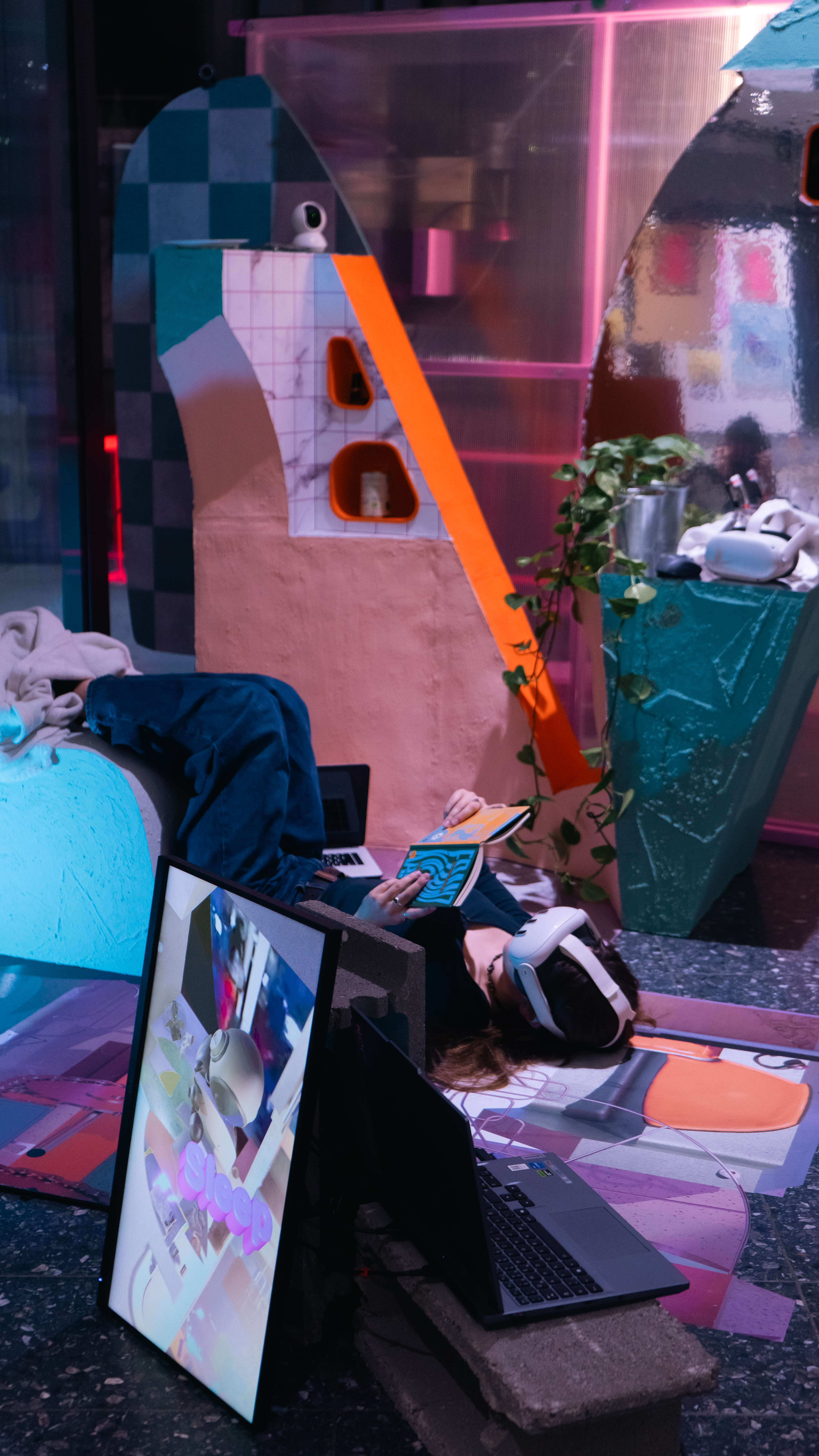




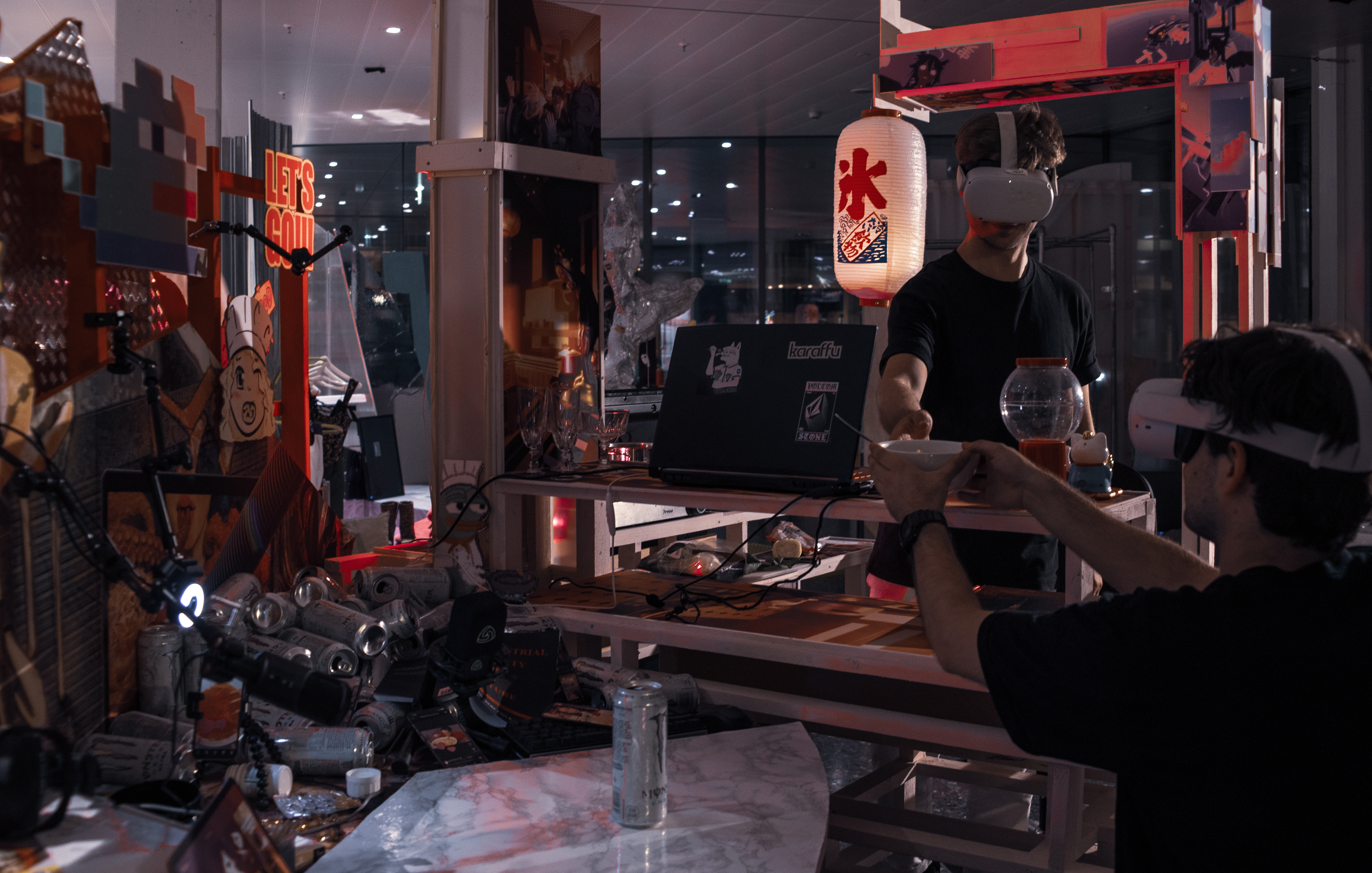



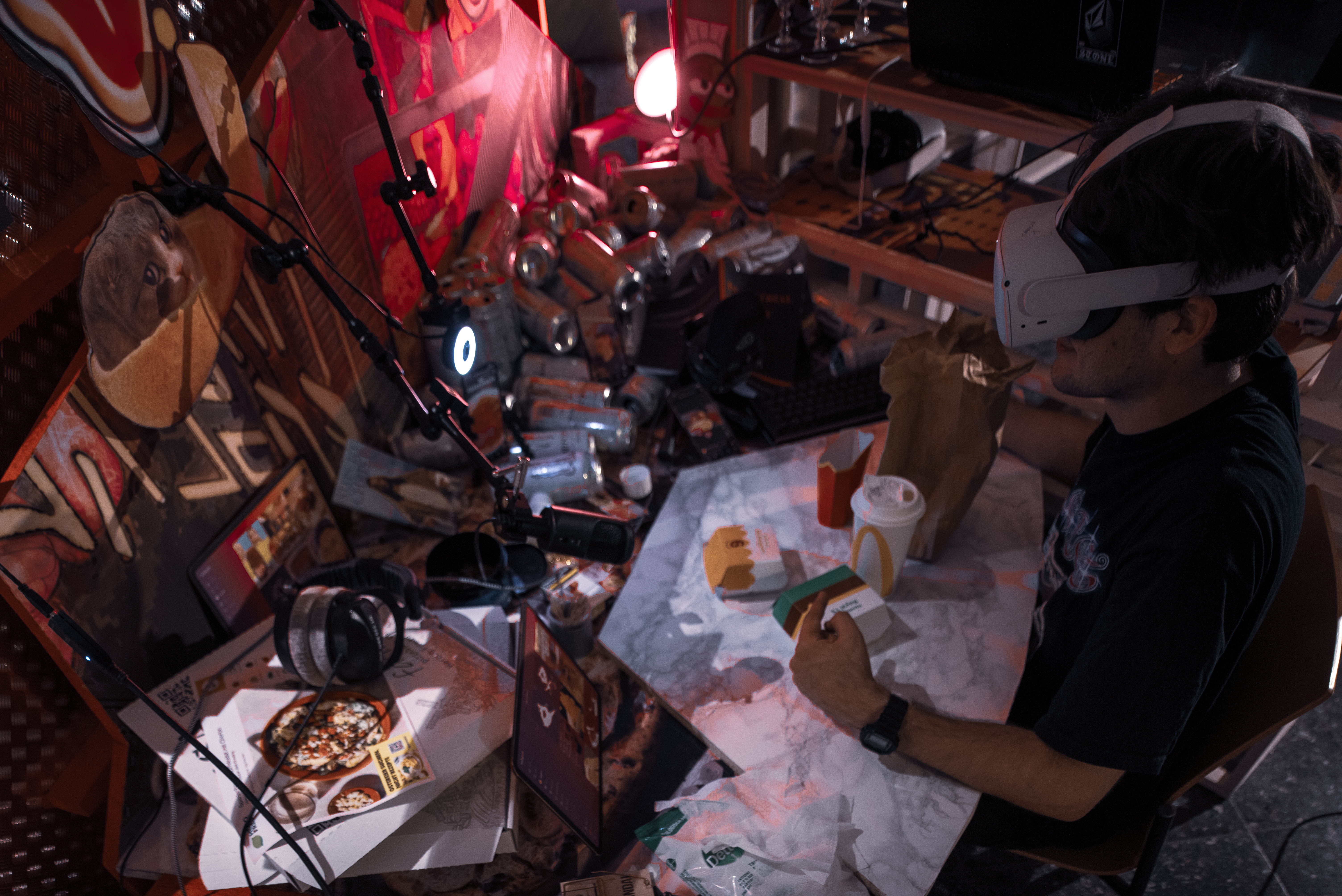
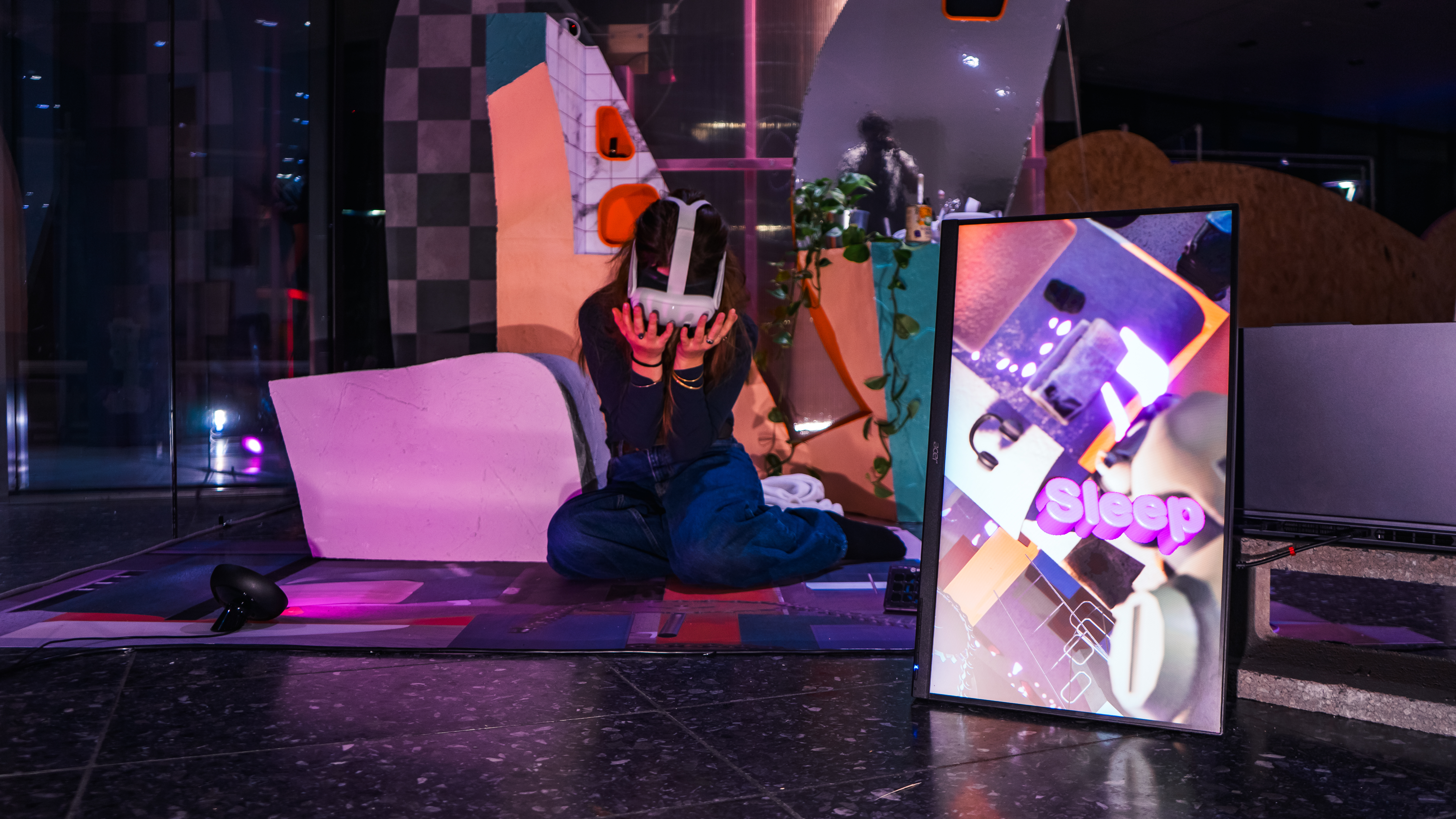
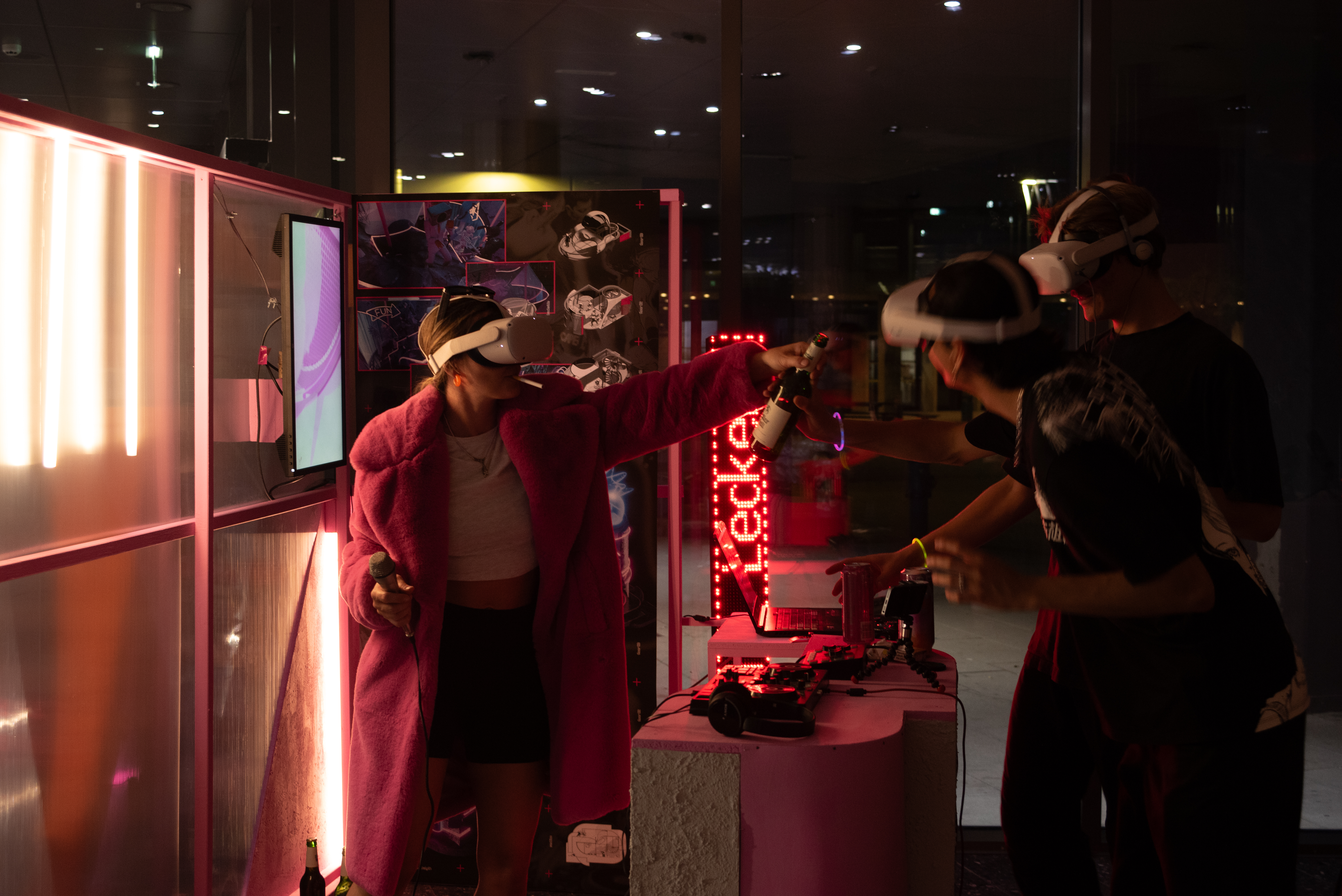




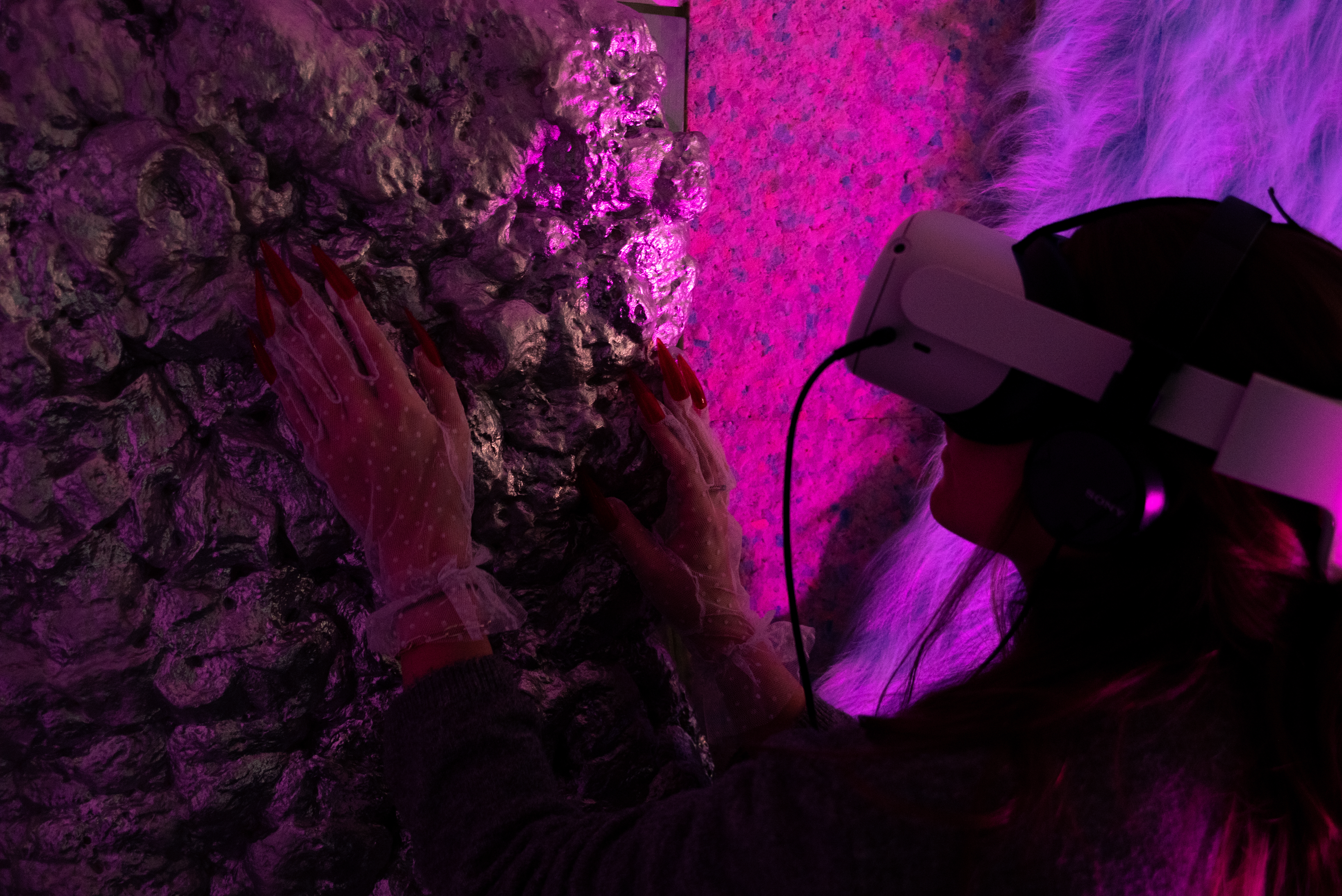
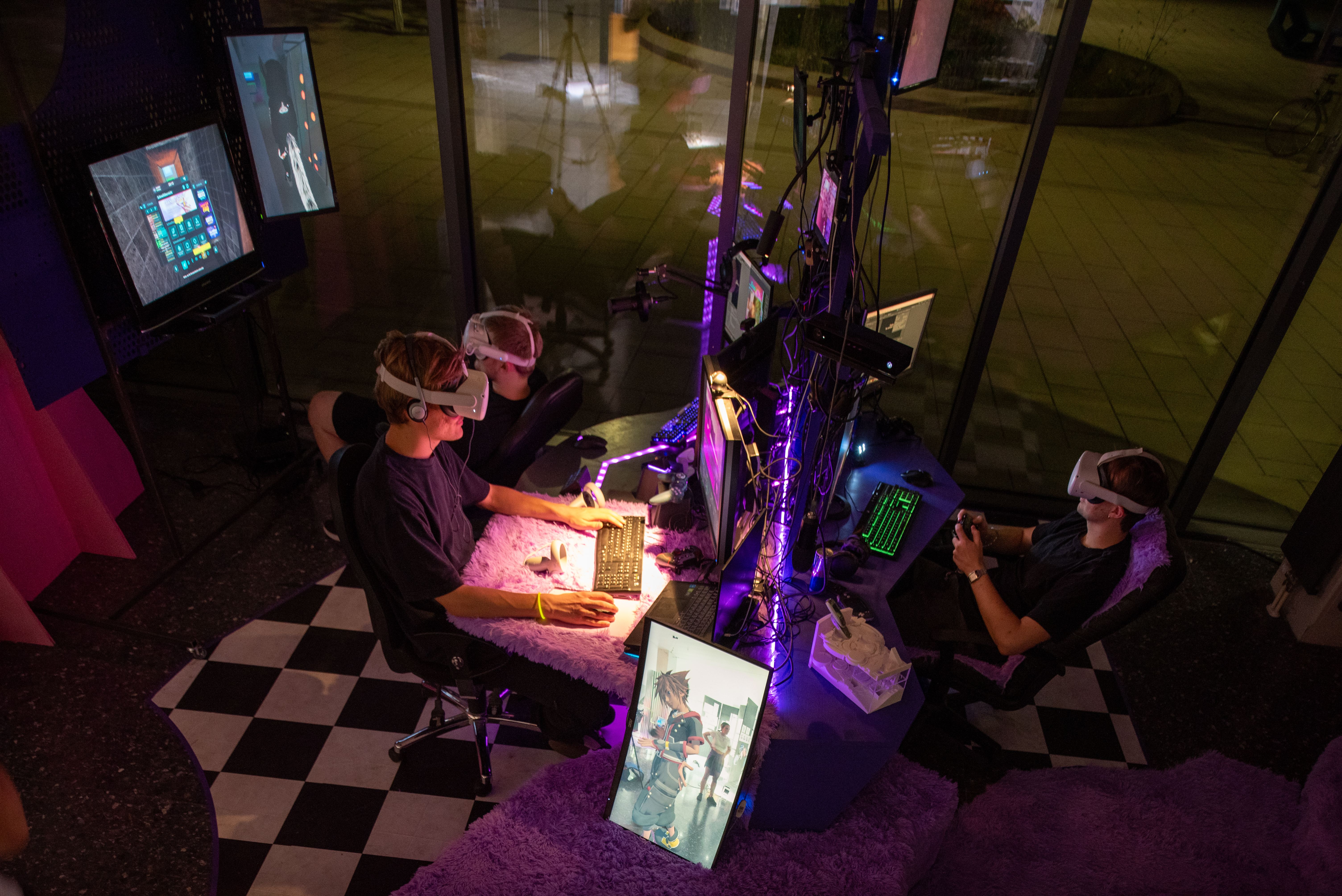

w
Drewes Fabian
Falbesoner Wassilissa
Gazzola Luca
Gebel Roman
Haim Fabio
Lutz Andres
Mair Antonia
Müller Zoe
Murschetz Maxima
Persic Niko
Ringer Regina
Schlautmann Florian
Schulz Marc
Van Koll Marvin
Weiss Adrian
photo credit
© Christoph Schwarz / Cenk Güzelis
Drewes Fabian
Falbesoner Wassilissa
Gazzola Luca
Gebel Roman
Haim Fabio
Lutz Andres
Mair Antonia
Müller Zoe
Murschetz Maxima
Persic Niko
Ringer Regina
Schlautmann Florian
Schulz Marc
Van Koll Marvin
Weiss Adrian
photo credit
© Christoph Schwarz / Cenk Güzelis
In this one-year-long bachelor studio, we’ve been exploring how architecture responds to the shifting nature of domesticity as media technologies become embedded in everyday spaces—structuring how we live, share, and are seen.
We’ve reached a point where domestic life is shaped by the algorithms of platform visibility. Homes have become stages mediated by cameras and screens.
However, this has a long architectural trajectory; already in the 1950s, television began shifting how domestic space was used. As Lynn Spigel writes in Make Room for TV, families restructured their interiors to accommodate the screen. Living rooms, bedrooms, and even kitchens were reorganized. Television became the new center of the home, replacing the fireplace as the place families gathered around, from which global information would enter the local.
In 1983, Ugo La Pietra’s Casa Telematica imagined a fully networked home where media systems were part of the architecture. Screens, cameras, and signals filled the space; design followed communication practices. That scenario feels familiar today. Our homes are full of devices. Screens are always on. Many people wake up and fall asleep in their glow.
Platformness becomes a kind of new urban condition, where online platforms serve as gathering spaces built on clickbait, attention economies, and endless scrolling. Twitch, TikTok, and YouTube transform everyday routines into content, sparking new domestic economies. Cooking, gaming, dressing, talking to yourself—anything can be streamed. Personal space becomes content space.
In our studio, we observed how online communities inhabit online spaces - like in Joe Hunting’s We Met in Virtual Reality, or Club Zodiac, which documents life inside VRChat. Joe beautifully showcases hidden online gatherings taking place in the virtual dimension, and the movies cut between the real and virtual lives of people, displaying how they make use of the virtual space as a socio-economic, sometimes intimate, sometimes emotional place.
What’s missing in those worlds is physical space. That’s where our studio steps in. Each student worked with both digital rituals and physical form, reimagining a case study house based on a specific online phenomenon they have deeply researched. Rather than treating screens as separate objects, we explore how space itself can function as an interface.
Departing with a research on the Radical Italian Designs of the 70s and the Austrian avant-garde vision of domestic design through mass media, over the one year studio, students have explored six different categories of online phenomena related to living/working at home through mediation of platforms and live streams—spanning from bathing to sleeping, from intimacy to gaming, from asmr to #hot, from eating in with strangers to fashion. Each theme examines how the rituals of domestic life are being reshaped and repurposed within architectural settings, particularly as they become intertwined with the digital economies of social networks, livestreaming platforms, and spatial computing.
But when space becomes the new screen, when architecture itself turns into a media object, what does it mean to be always online or to have offline spaces? To have product placement in a portion of your home? And when eyes don’t just watch you but live with you, remotely, constantly, how do you move through a kitchen that doubles as a set? How do you behave in a bathroom that might be broadcast? What becomes of a bedroom where the line between resting and recording has thinned?
The studio rethinks these rituals, tracing how they shift from screen to space, and asks how architecture and interiors might respond when its blueprints are no longer fixed but updated in real-time by the logic of streams and the algorithms of visibility.
Our design-led research culminated in a series of 1:1 built XR installations. Each one is a fragment of domestic space expanded through collective digital overlays, stitched environments where the physical and the virtual coexist. These are prototypes of domesticity that showcase what happens when home is a shared interface, inhabited by strange collectives shaped around economy, social presence, and sometimes, intimate encounters.
We aim to expose the absurd and performative aspects of living at home within online contexts, not to adopt them as new ways of living, but to explore how the fusion of space and media creates something absurd, performative, and radical. And alongside this, how architecture might open space for alternatives that move beyond platform capitalism, imagining forms of domesticity grounded in smaller, stranger, and more mutual forms of digital life.
We’ve reached a point where domestic life is shaped by the algorithms of platform visibility. Homes have become stages mediated by cameras and screens.
However, this has a long architectural trajectory; already in the 1950s, television began shifting how domestic space was used. As Lynn Spigel writes in Make Room for TV, families restructured their interiors to accommodate the screen. Living rooms, bedrooms, and even kitchens were reorganized. Television became the new center of the home, replacing the fireplace as the place families gathered around, from which global information would enter the local.
In 1983, Ugo La Pietra’s Casa Telematica imagined a fully networked home where media systems were part of the architecture. Screens, cameras, and signals filled the space; design followed communication practices. That scenario feels familiar today. Our homes are full of devices. Screens are always on. Many people wake up and fall asleep in their glow.
Platformness becomes a kind of new urban condition, where online platforms serve as gathering spaces built on clickbait, attention economies, and endless scrolling. Twitch, TikTok, and YouTube transform everyday routines into content, sparking new domestic economies. Cooking, gaming, dressing, talking to yourself—anything can be streamed. Personal space becomes content space.
In our studio, we observed how online communities inhabit online spaces - like in Joe Hunting’s We Met in Virtual Reality, or Club Zodiac, which documents life inside VRChat. Joe beautifully showcases hidden online gatherings taking place in the virtual dimension, and the movies cut between the real and virtual lives of people, displaying how they make use of the virtual space as a socio-economic, sometimes intimate, sometimes emotional place.
What’s missing in those worlds is physical space. That’s where our studio steps in. Each student worked with both digital rituals and physical form, reimagining a case study house based on a specific online phenomenon they have deeply researched. Rather than treating screens as separate objects, we explore how space itself can function as an interface.
Departing with a research on the Radical Italian Designs of the 70s and the Austrian avant-garde vision of domestic design through mass media, over the one year studio, students have explored six different categories of online phenomena related to living/working at home through mediation of platforms and live streams—spanning from bathing to sleeping, from intimacy to gaming, from asmr to #hot, from eating in with strangers to fashion. Each theme examines how the rituals of domestic life are being reshaped and repurposed within architectural settings, particularly as they become intertwined with the digital economies of social networks, livestreaming platforms, and spatial computing.
But when space becomes the new screen, when architecture itself turns into a media object, what does it mean to be always online or to have offline spaces? To have product placement in a portion of your home? And when eyes don’t just watch you but live with you, remotely, constantly, how do you move through a kitchen that doubles as a set? How do you behave in a bathroom that might be broadcast? What becomes of a bedroom where the line between resting and recording has thinned?
The studio rethinks these rituals, tracing how they shift from screen to space, and asks how architecture and interiors might respond when its blueprints are no longer fixed but updated in real-time by the logic of streams and the algorithms of visibility.
Our design-led research culminated in a series of 1:1 built XR installations. Each one is a fragment of domestic space expanded through collective digital overlays, stitched environments where the physical and the virtual coexist. These are prototypes of domesticity that showcase what happens when home is a shared interface, inhabited by strange collectives shaped around economy, social presence, and sometimes, intimate encounters.
We aim to expose the absurd and performative aspects of living at home within online contexts, not to adopt them as new ways of living, but to explore how the fusion of space and media creates something absurd, performative, and radical. And alongside this, how architecture might open space for alternatives that move beyond platform capitalism, imagining forms of domesticity grounded in smaller, stranger, and more mutual forms of digital life.
Learn more about some project below ♥︎↴
ALL WE CAN EAT by Roman Gebel





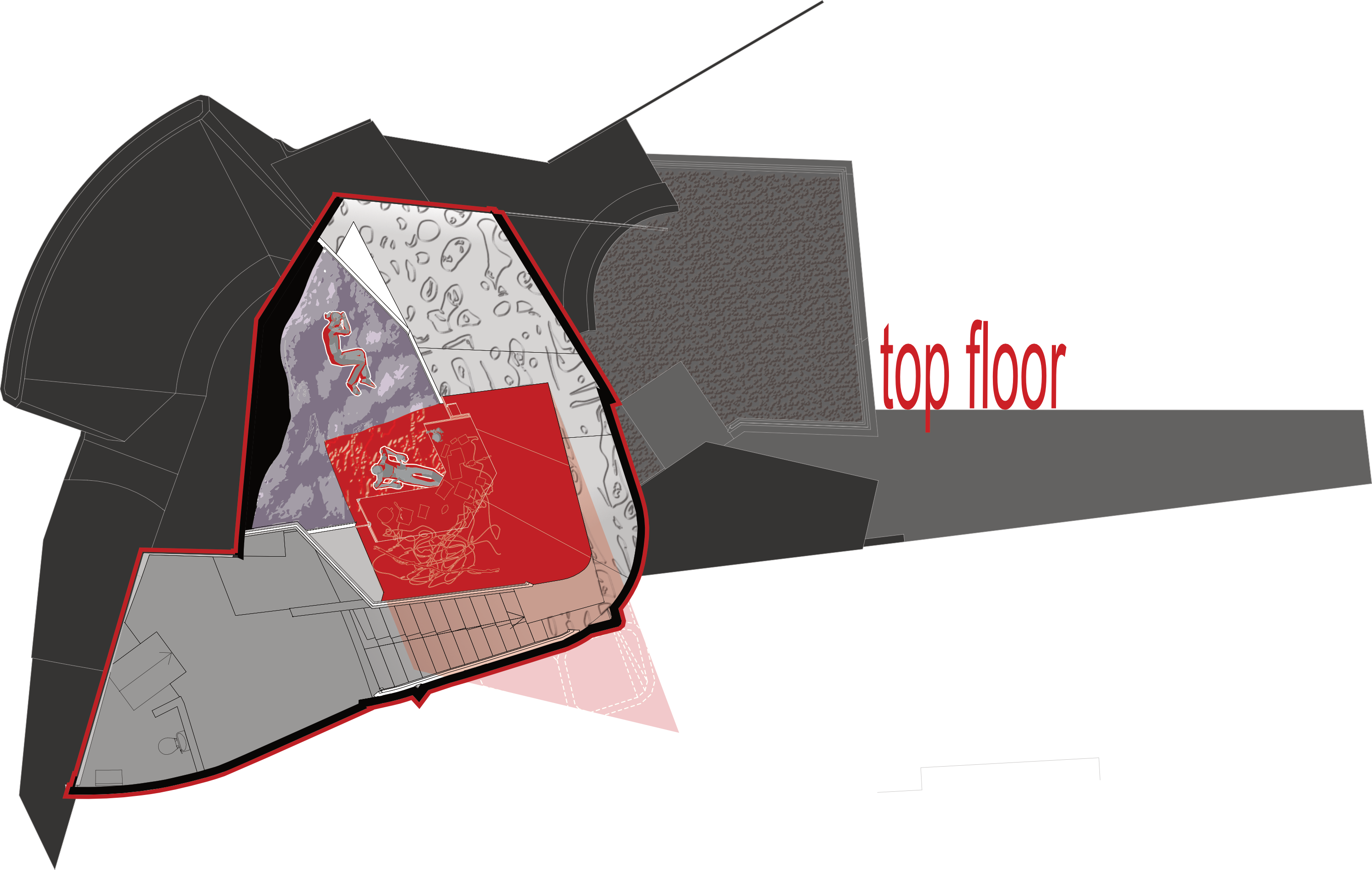
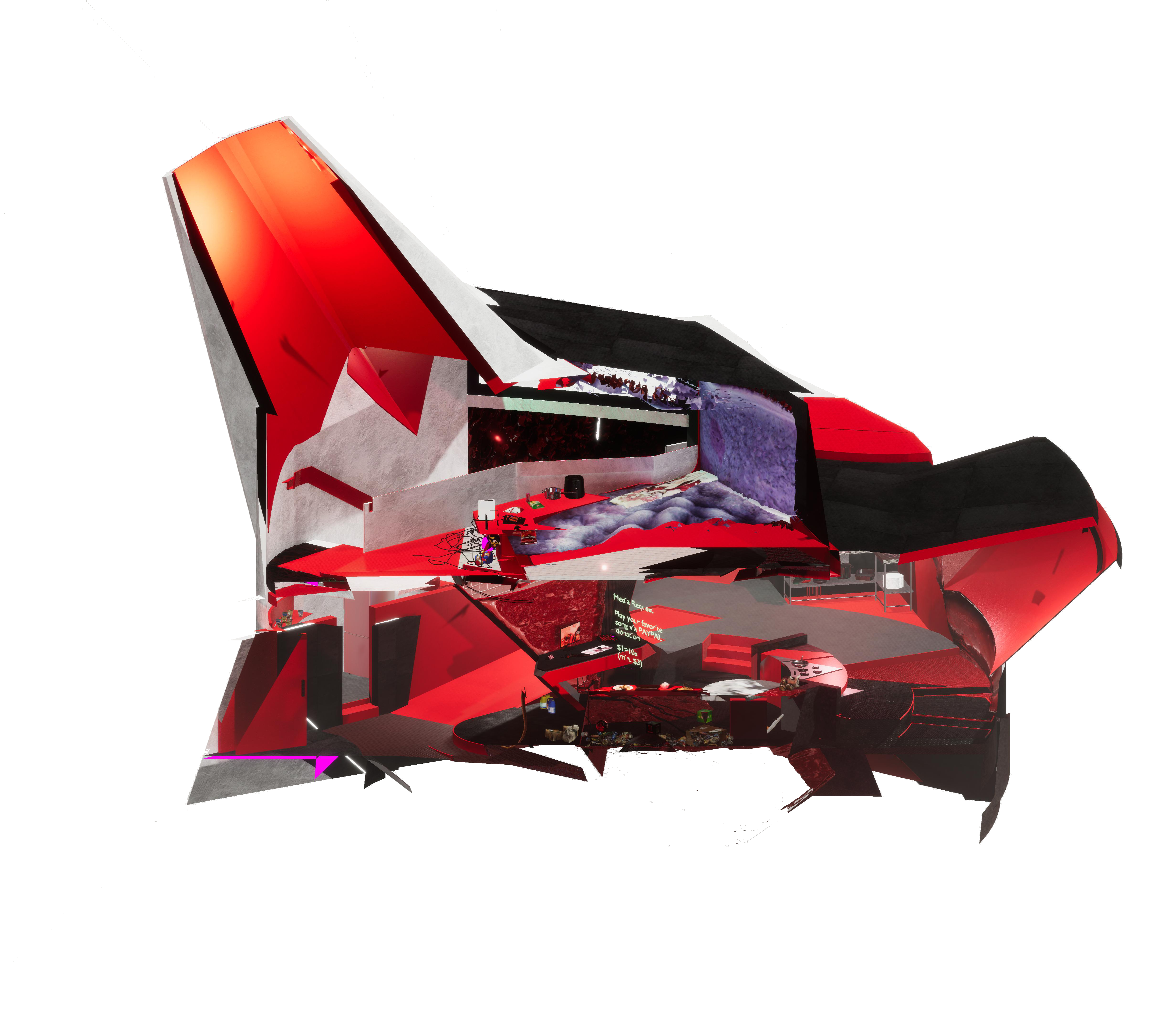
The project began with an observation of how contemporary digital culture has redefined
the domestic sphere. Once considered a site of privacy, the home has increasingly be-
come a stage, a spatial extension of the online self. In this shift, activities once confined
to the interior, such as eating, have taken on a performative dimension within virtual
space. Platforms like YouTube, Twitch, TikTok, Instagram and VRChat have transformed
the everyday act of dining into a broadcast event, where meals become media and
kitchens become studios.
Through this lens, the project positions itself as both an analysis and a design speculation. It traces the genealogy of the dining room and kitchen as social, technological, and representational constructs; from the rationalized workflows of Schütte-Lihotzky’s Frankfurt Kitchen to the ritualized disorder of the dinner table as seen in Sarah Wigglesworth’s drawings. In doing so, it reveals how the architecture of domesticity has always mir- rored wider cultural and economic systems, from industrial efficiency to post-industrial self-performance - if the twentieth-century kitchen was designed around the optimization of physical labour, so does the contemporary content-kitchen extend into digital labour, while combining its functions in a multipurpose, multidimensional spatial montage.
In this sense, All We Can Eat is a call for the architecture of tomorrow to tackle the in- creasing connection between even the most innocuous domestic activities and their mediality, as well as what the growing diffusion of broad societal symbols into a multiplicity of content-driven microcosms of meaning means for the private dwelling.
The speculative design developed here translates this condition into architecture. In the new environment, the domestic interior can be reconceived as a capsule environment - a utilitarian core stripped back to the most essential programs whose secondary, expressive functions extend into the digital. In doing so, it reflects the shifting boundary between the physical and virtual realms of habitation, asking what “dwelling” means when the most social parts of the home now exist online.
Ultimately, the project is less a proposal for a single building than a reflection on an evolving typology: the mediated home. It interrogates how architecture might respond to modes of living that are no longer confined to material space, and how design can engage with the immaterial infrastructures that now shape the experience of domesticity. It does not seek to moralize or romanticize the digital, but to recognize it as a new context of habitation, one in which performance, production, and private life are inseparably entwined.
Through this lens, the project positions itself as both an analysis and a design speculation. It traces the genealogy of the dining room and kitchen as social, technological, and representational constructs; from the rationalized workflows of Schütte-Lihotzky’s Frankfurt Kitchen to the ritualized disorder of the dinner table as seen in Sarah Wigglesworth’s drawings. In doing so, it reveals how the architecture of domesticity has always mir- rored wider cultural and economic systems, from industrial efficiency to post-industrial self-performance - if the twentieth-century kitchen was designed around the optimization of physical labour, so does the contemporary content-kitchen extend into digital labour, while combining its functions in a multipurpose, multidimensional spatial montage.
In this sense, All We Can Eat is a call for the architecture of tomorrow to tackle the in- creasing connection between even the most innocuous domestic activities and their mediality, as well as what the growing diffusion of broad societal symbols into a multiplicity of content-driven microcosms of meaning means for the private dwelling.
The speculative design developed here translates this condition into architecture. In the new environment, the domestic interior can be reconceived as a capsule environment - a utilitarian core stripped back to the most essential programs whose secondary, expressive functions extend into the digital. In doing so, it reflects the shifting boundary between the physical and virtual realms of habitation, asking what “dwelling” means when the most social parts of the home now exist online.
Ultimately, the project is less a proposal for a single building than a reflection on an evolving typology: the mediated home. It interrogates how architecture might respond to modes of living that are no longer confined to material space, and how design can engage with the immaterial infrastructures that now shape the experience of domesticity. It does not seek to moralize or romanticize the digital, but to recognize it as a new context of habitation, one in which performance, production, and private life are inseparably entwined.
CHARACTER COUTURE by Wassilissa Falbesoner


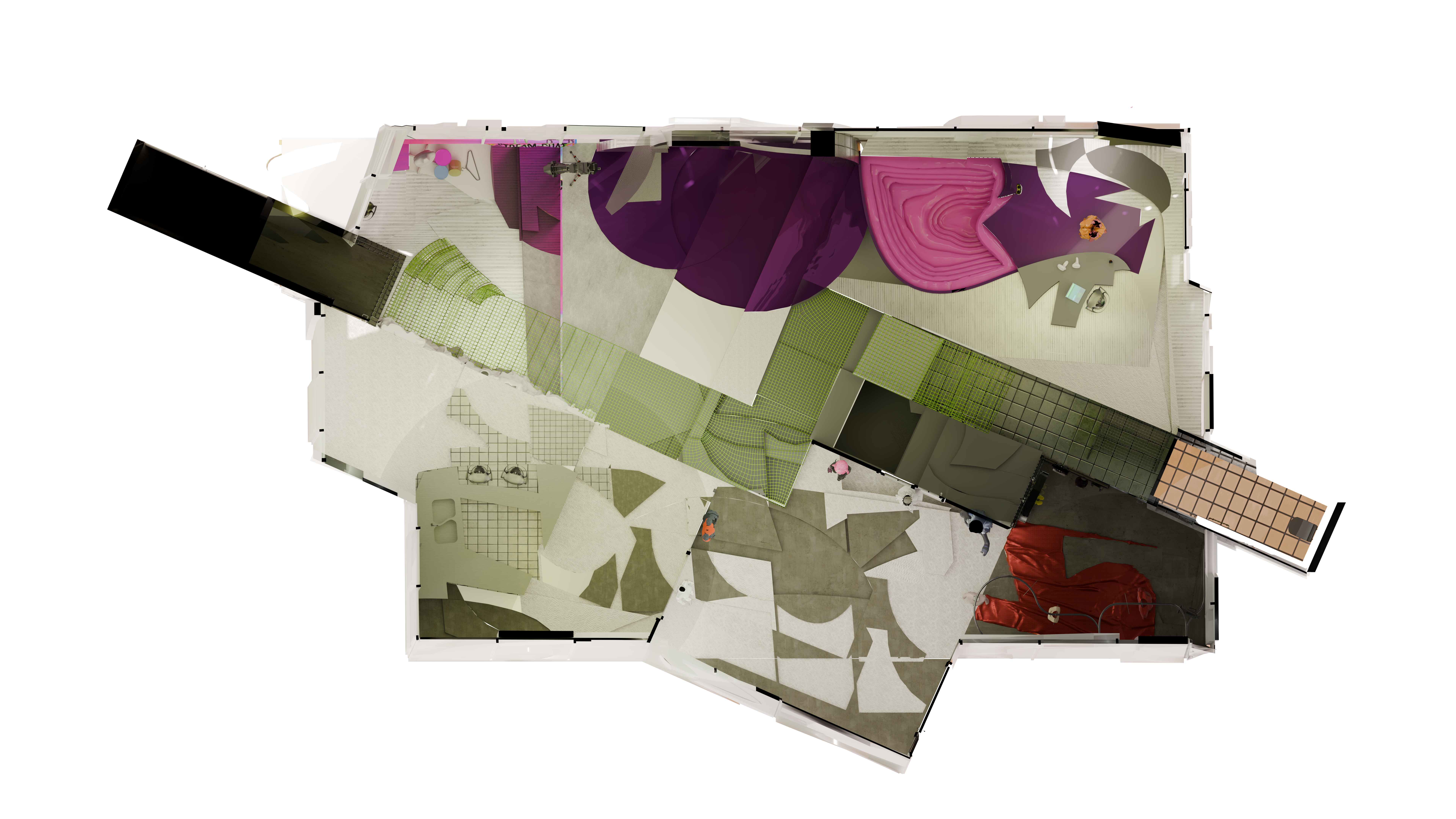

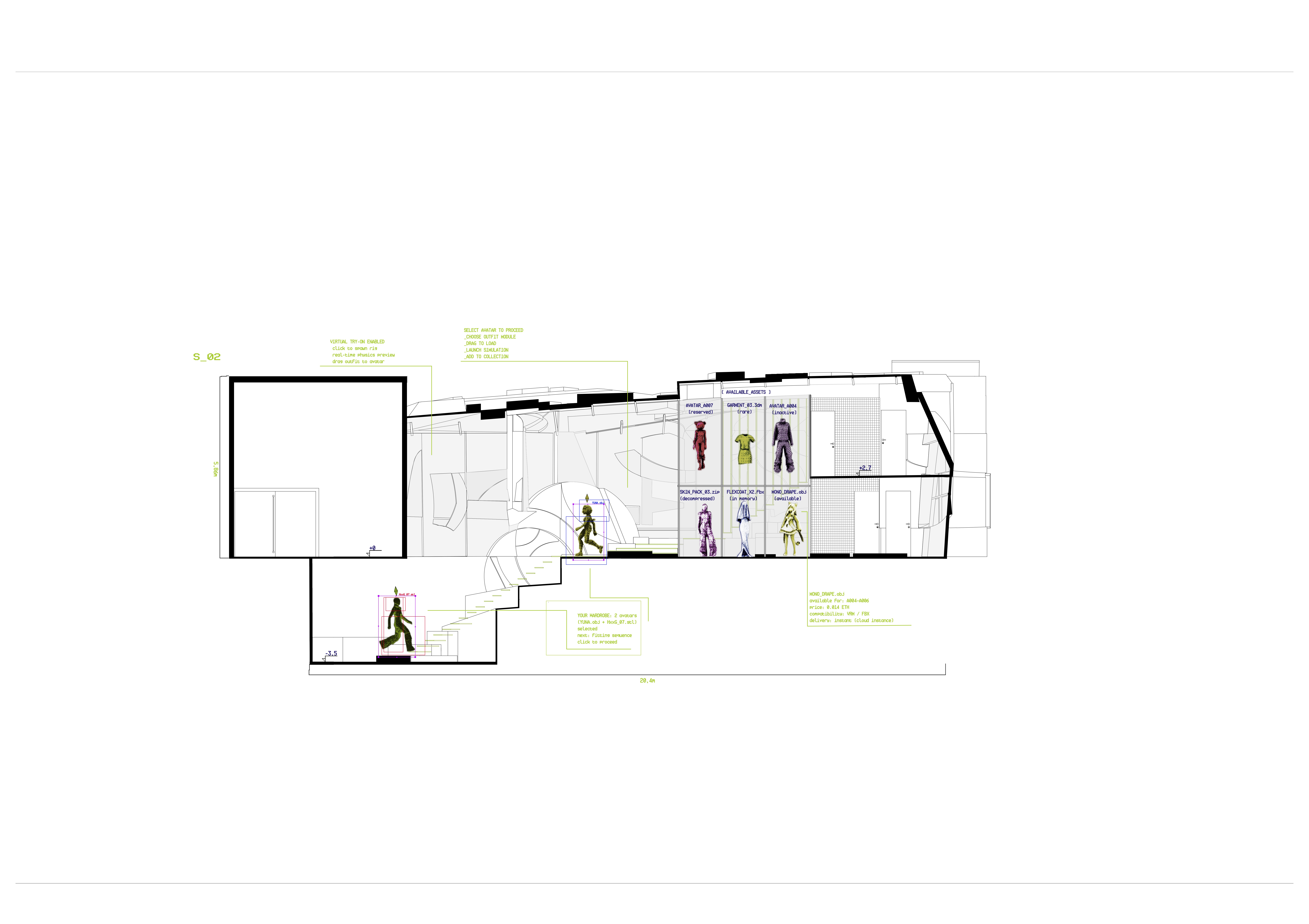
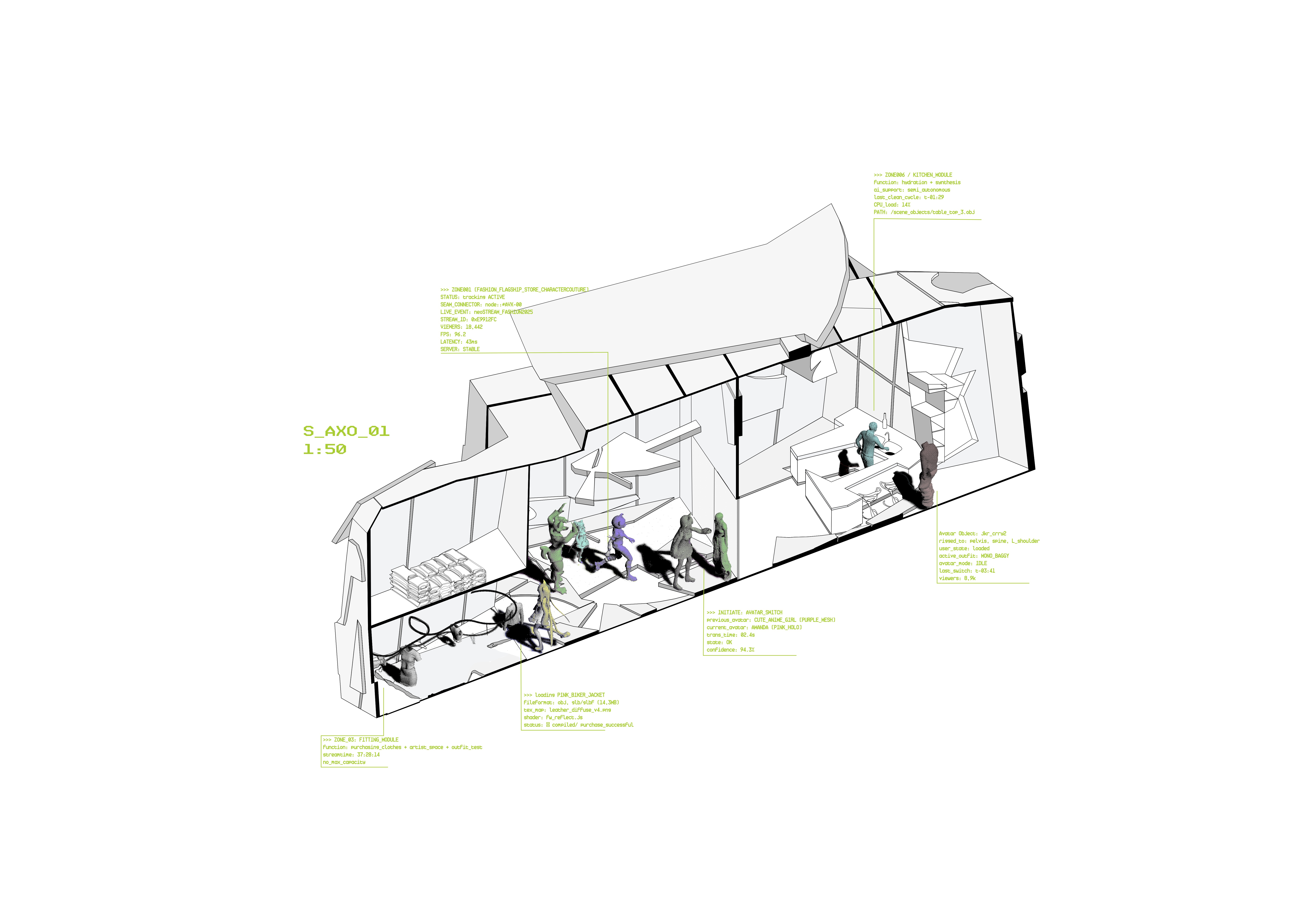
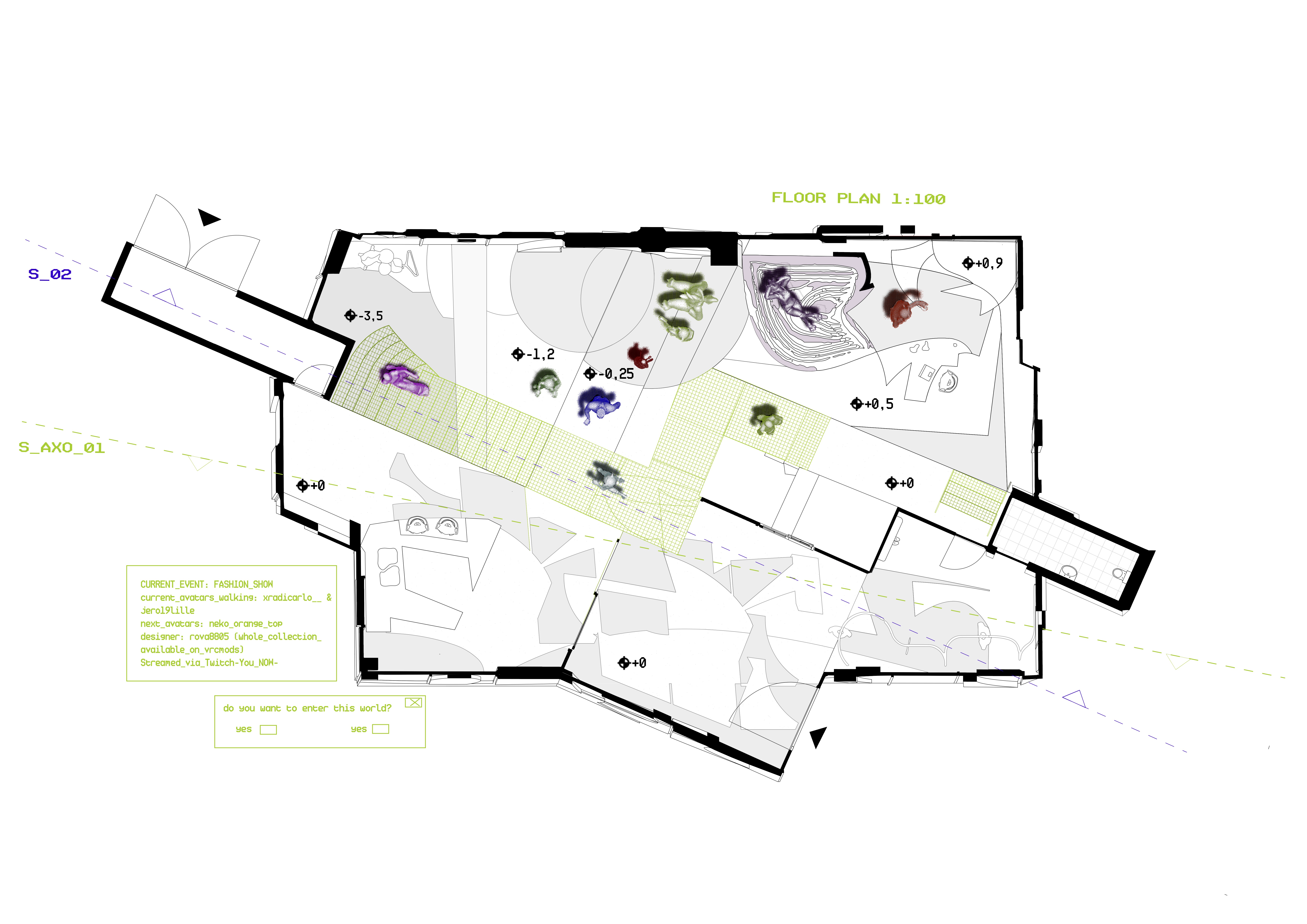
The project
TINGLE TOWER by Adrian Weiss
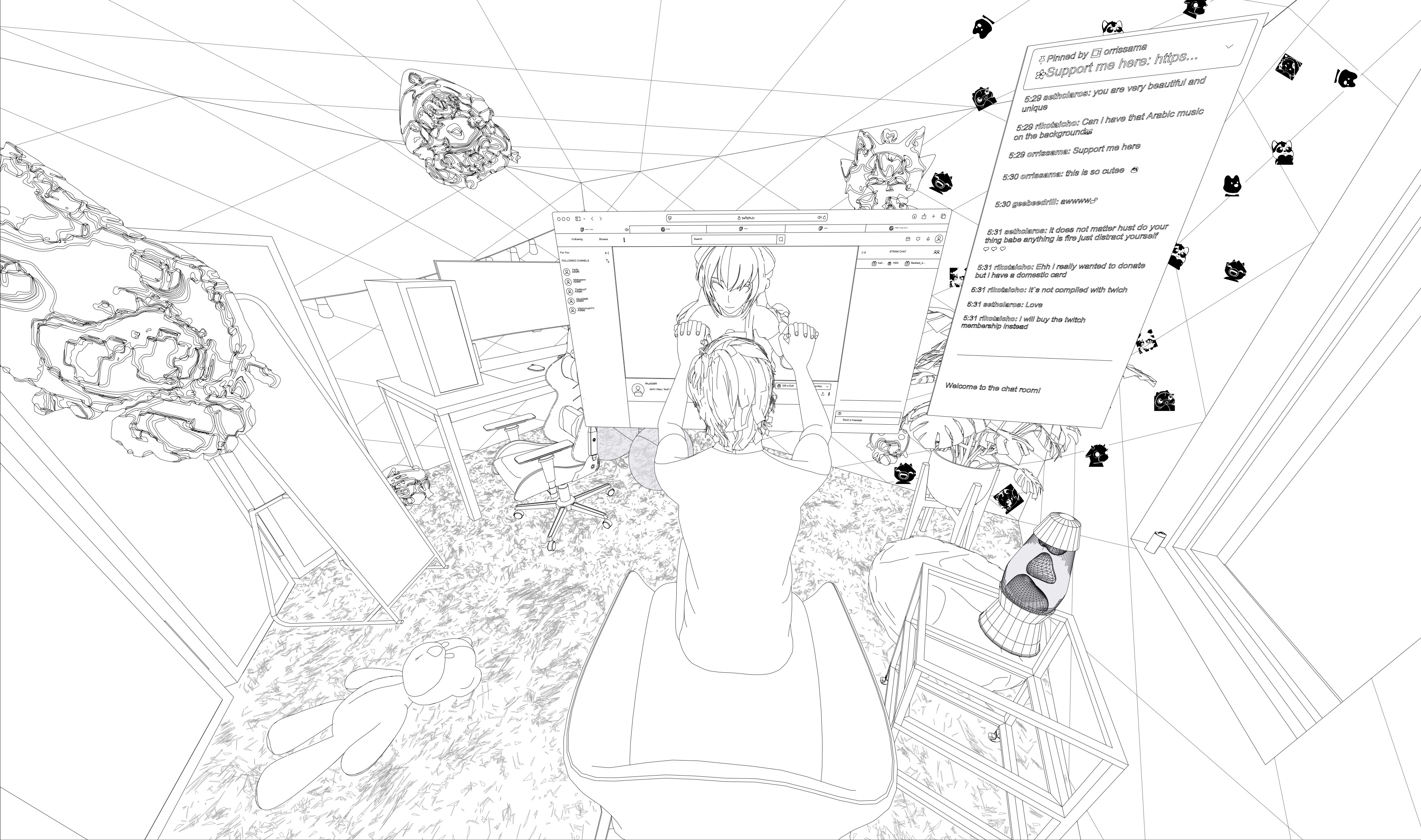


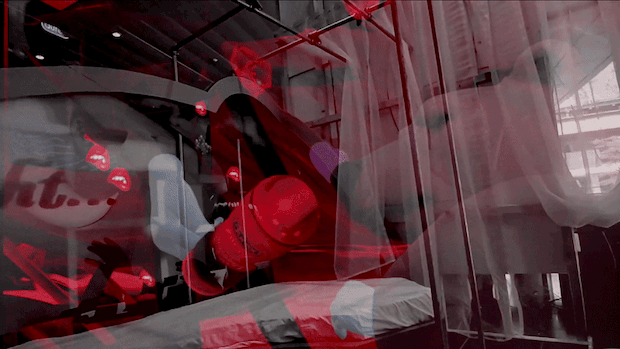

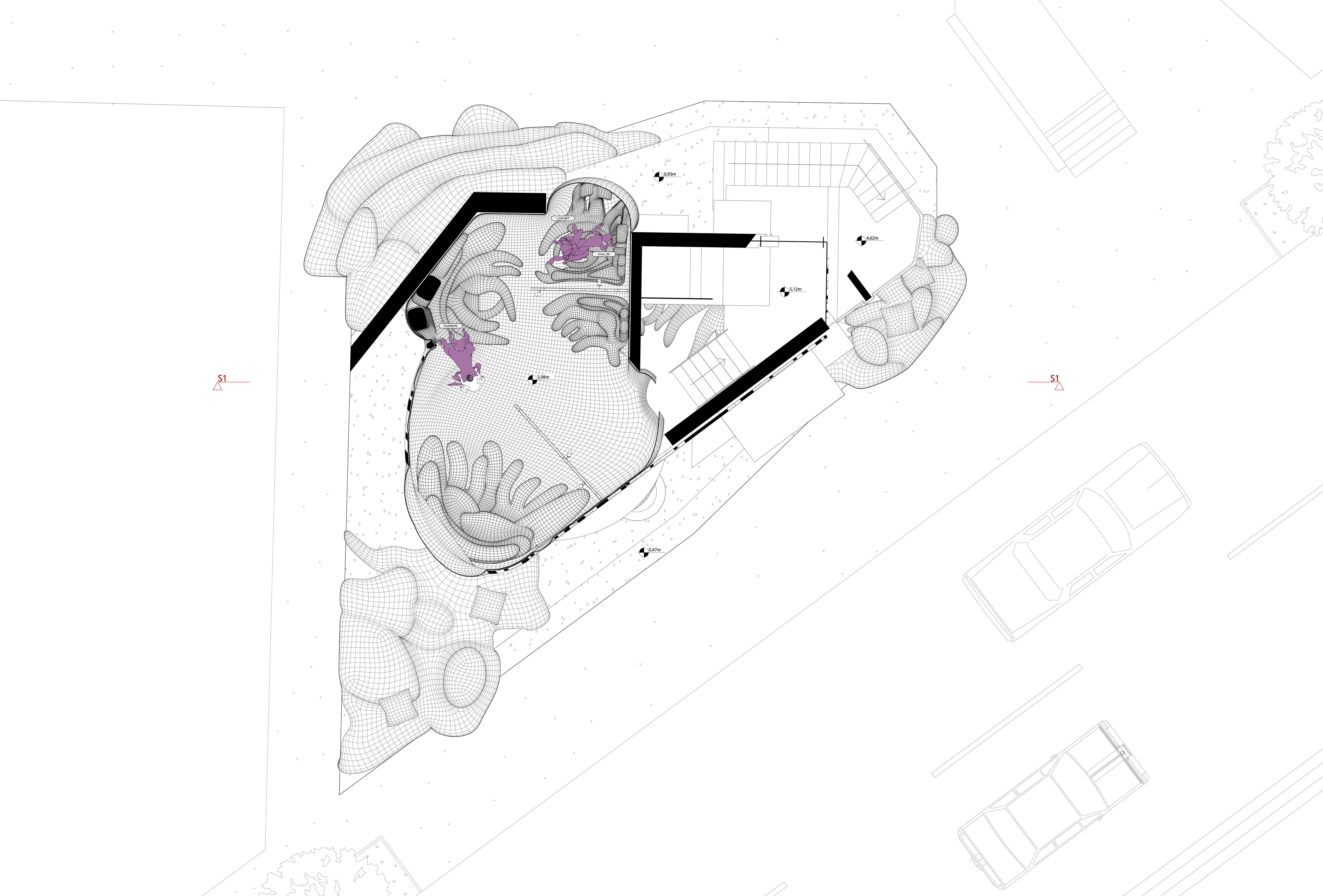

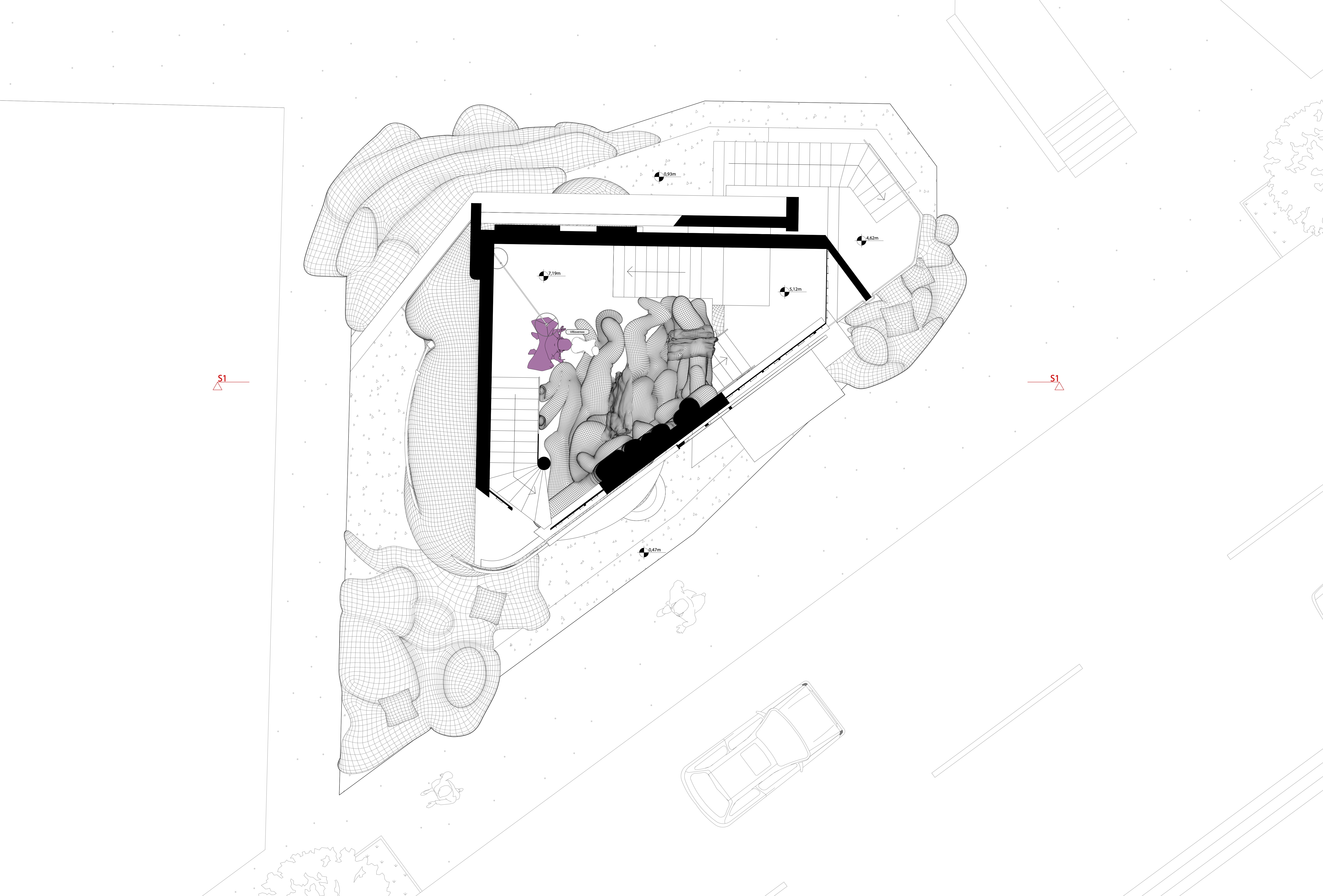

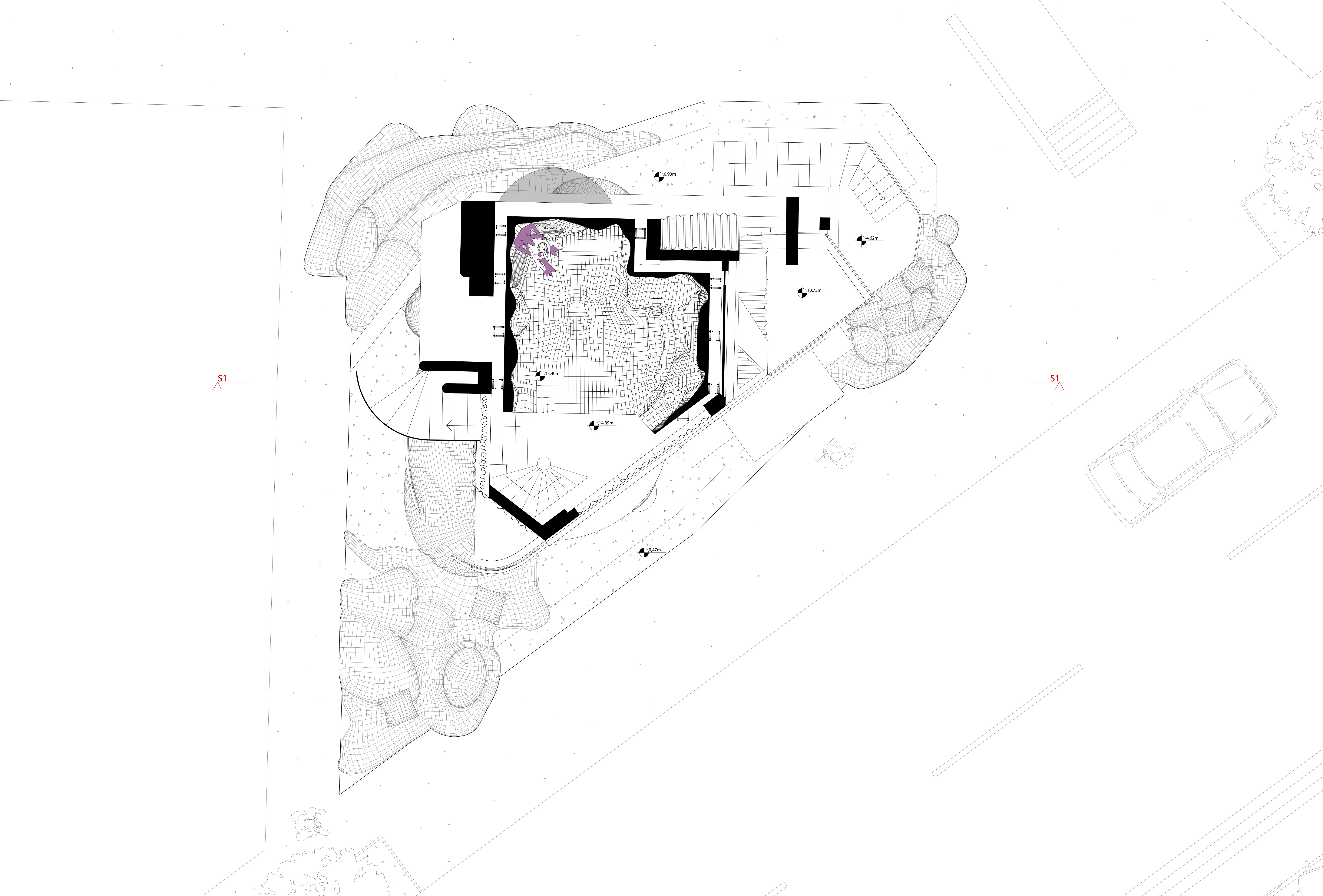

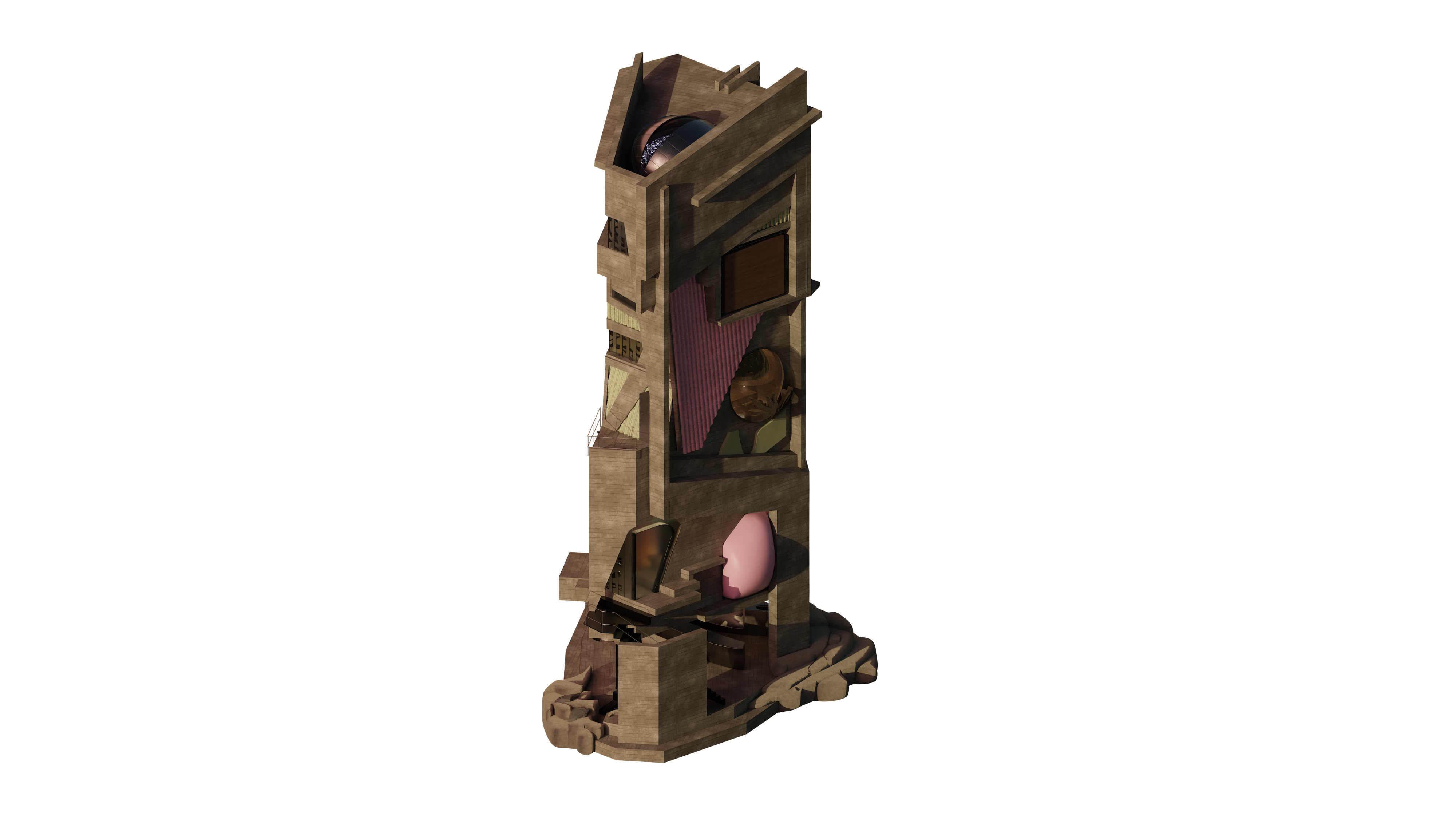
The project
TIRED TOGETHER by Florian Schlautmann


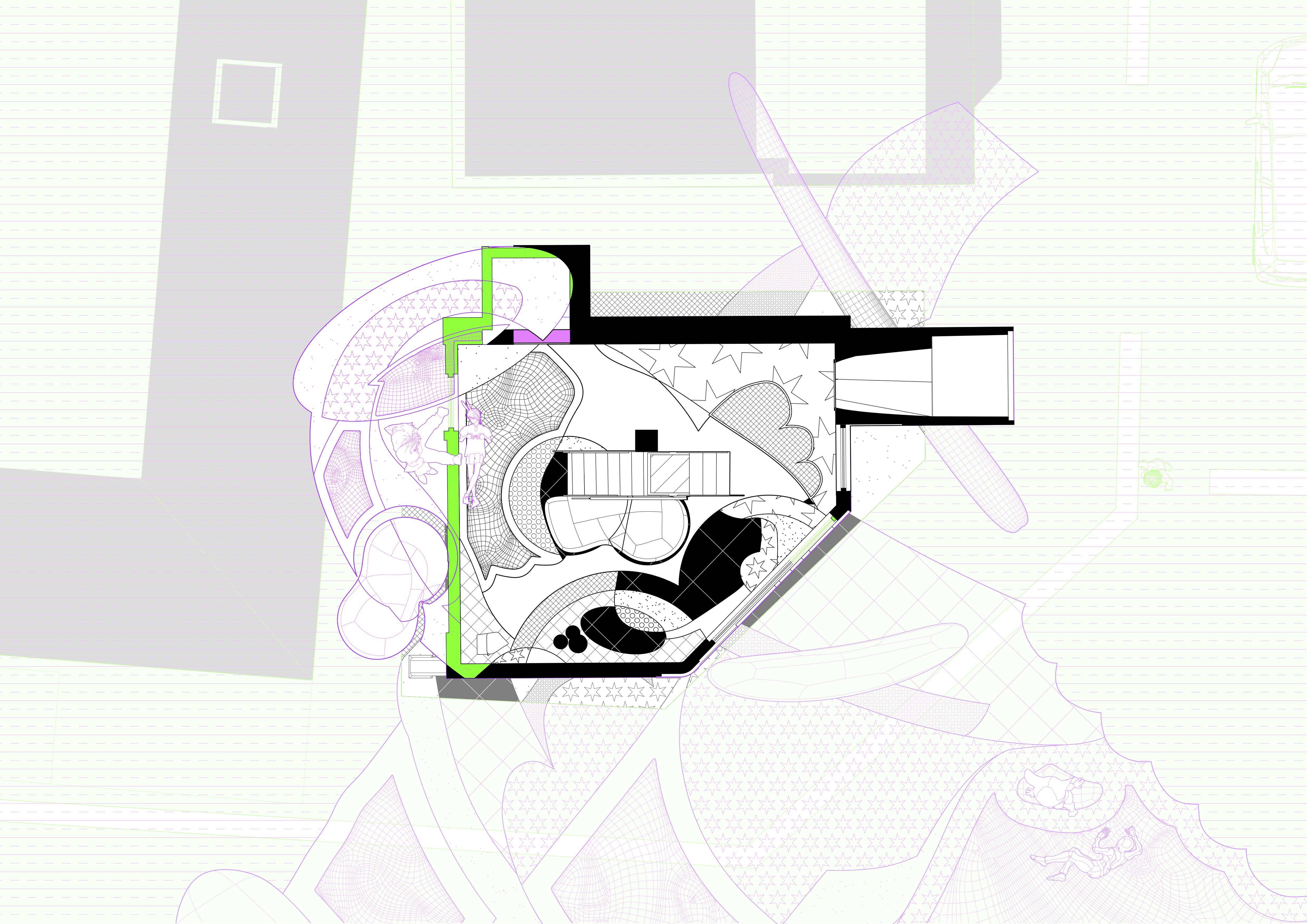
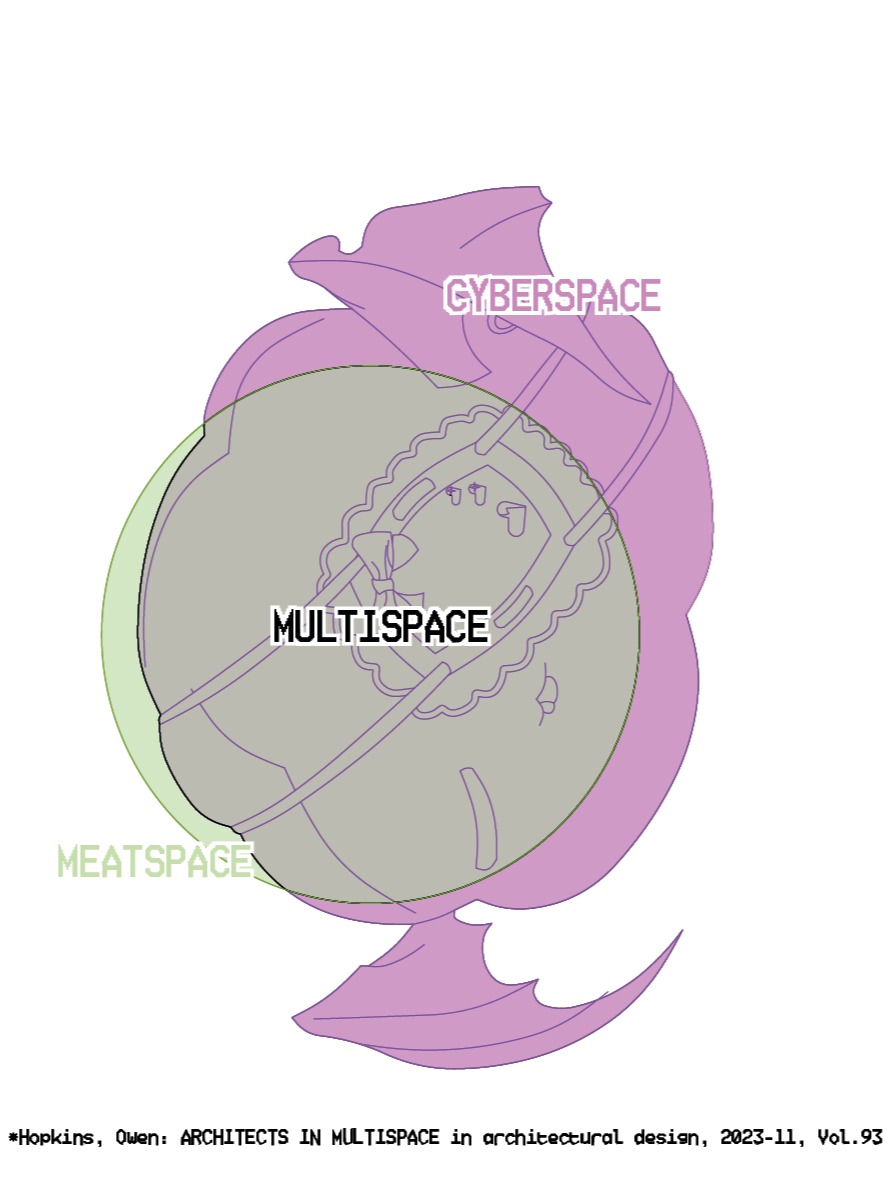

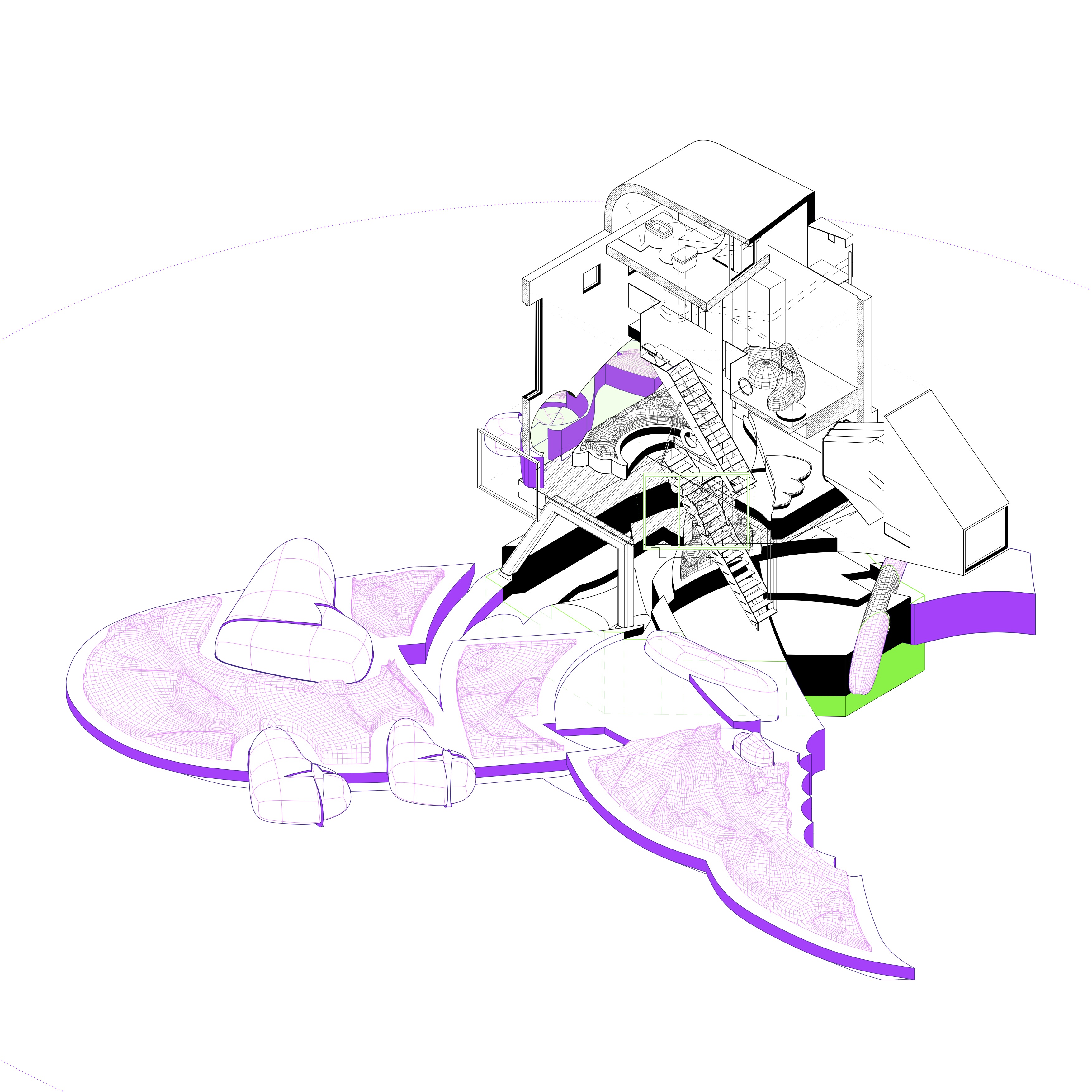
The projec
ENSEMBLE ENGINE by Antonia Mair





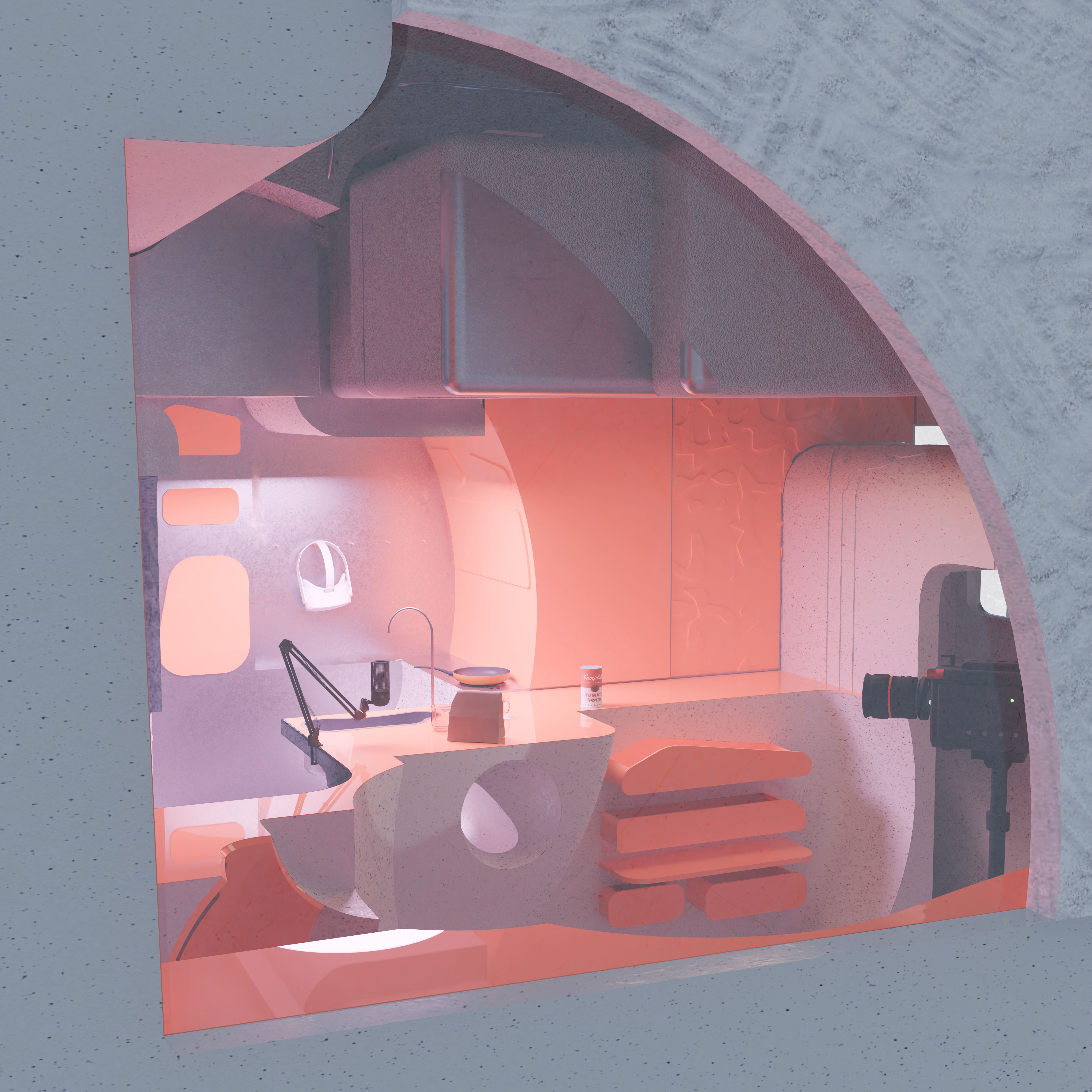
The project
ENSEMBLE ENGINE by Marc Schulz






The project